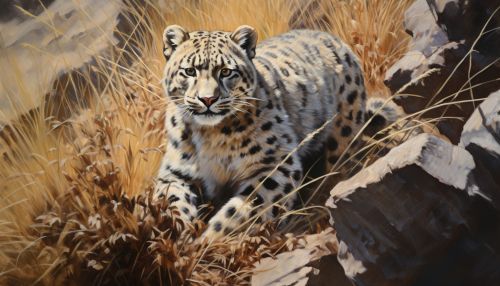Wildlife of Tibet
Overview
The Tibetan Plateau, also known as the "Roof of the World," is home to a diverse array of wildlife species. This region, characterized by its high altitude, harsh climate, and unique geographical features, provides a habitat for a variety of animals that have adapted to survive in these extreme conditions. This article will explore the various wildlife species found in Tibet, their adaptations, and their roles in the ecosystem.


Mammals
Tibet is home to a variety of mammalian species, many of which are unique to this region. These include large predators such as the snow leopard and the Tibetan wolf, as well as herbivores like the Tibetan antelope and the wild yak.
Snow Leopard
The snow leopard is one of the most iconic species of the Tibetan Plateau. This elusive predator is well-adapted to the harsh climate and rugged terrain of the region, with a thick coat for insulation and large paws for navigating the rocky landscape. The snow leopard's primary prey includes blue sheep and Himalayan tahr.
Tibetan Wolf
The Tibetan wolf is a subspecies of the gray wolf and is native to the Tibetan Plateau. It is a highly adaptable predator, capable of surviving in the harsh conditions of the region. The Tibetan wolf primarily feeds on small to medium-sized mammals, including pikas and marmots.
Tibetan Antelope
The Tibetan antelope, or chiru, is a species of antelope endemic to the Tibetan Plateau. It is well-adapted to the high altitude and cold climate of the region, with a thick, woolly coat that provides insulation. The chiru is a primary target for poachers due to the high demand for its wool, known as shahtoosh, which is used to make luxury shawls.
Wild Yak
The wild yak is a large bovid native to the Tibetan Plateau. It is one of the largest land mammals in Asia and is well-adapted to the harsh conditions of the region, with a thick coat for insulation and large lungs for breathing at high altitudes. The wild yak is a keystone species in the ecosystem, playing a crucial role in shaping the landscape and providing a food source for predators.
Birds
Tibet is also home to a diverse array of bird species, many of which are unique to the region. These include the black-necked crane, the Tibetan snowcock, and the Tibetan sandgrouse.
Black-necked Crane
The black-necked crane is a large bird species found in the high-altitude wetlands of the Tibetan Plateau. It is revered in Tibetan culture and is considered a symbol of longevity and good luck. The black-necked crane is a vulnerable species, with habitat loss and human disturbance posing significant threats to its survival.
Tibetan Snowcock
The Tibetan snowcock is a bird species found in the high-altitude regions of the Tibetan Plateau. It is well-adapted to the harsh conditions of the region, with a thick plumage for insulation and a diet primarily consisting of alpine vegetation.
Tibetan Sandgrouse
The Tibetan sandgrouse is a bird species endemic to the Tibetan Plateau. It is well-adapted to the arid conditions of the region, with a diet primarily consisting of seeds and insects. The Tibetan sandgrouse is a key species in the ecosystem, playing a crucial role in seed dispersal.
Conservation
Conservation efforts in Tibet are primarily focused on protecting the region's unique wildlife and their habitats. This includes measures to combat poaching, habitat conservation initiatives, and programs aimed at promoting sustainable practices among local communities. Despite these efforts, many species in Tibet remain threatened due to factors such as habitat loss, climate change, and human-wildlife conflict.
